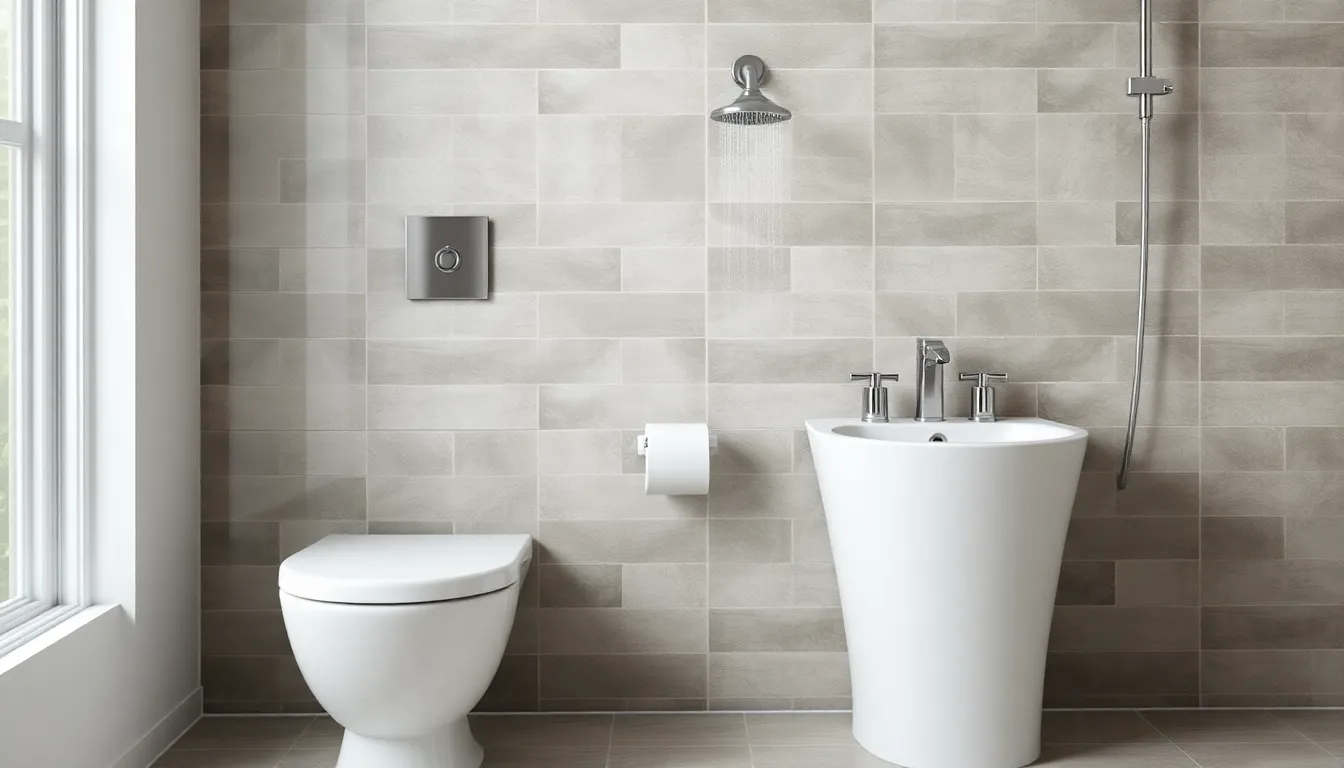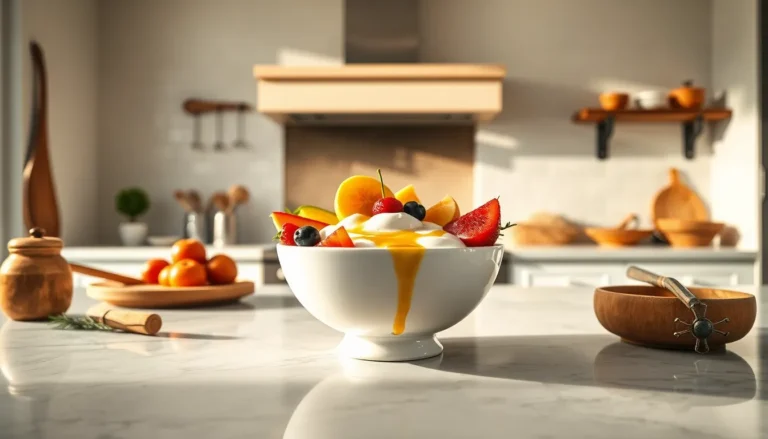Water-saving fixtures are the unsung heroes of modern plumbing. They’re like the superheroes of your bathroom and kitchen, swooping in to save the day while keeping your water bill from skyrocketing. Imagine a world where you can shower for hours without feeling guilty about your water usage—sounds dreamy, right? With these innovative fixtures, you can have your cake and eat it too, all while being eco-friendly.
Table of Contents
ToggleOverview of Water-Saving Fixtures
Water-saving fixtures play a crucial role in modern plumbing, emphasizing efficiency and sustainability. These fixtures include low-flow faucets, showerheads, and toilets designed to minimize water usage without sacrificing performance. For example, low-flow showerheads can reduce water flow to as little as 1.5 gallons per minute compared to traditional models that use 2.5 gallons per minute or more.
Additionally, dual-flush toilets offer two flushing options that use either 0.8 or 1.6 gallons per flush. This design enables users to make more informed choices about water consumption. Other innovative products, like aerators for faucets, allow for air mixing with water, producing a steady stream while using less water.
Energy-efficient appliances also contribute to water conservation. Dishwashers equipped with water-saving features can use as little as 3 gallons per load. Similarly, washing machines now come with cycles that promote lower water usage, some utilizing up to 50% less water than older models.
Incorporating these fixtures can result in significant savings. Households can cut water bills by 20 to 60% with strategic installations. Increased awareness of these fixtures among consumers leads to greater market demand, fueling further innovation in water-saving technology. Ultimately, water-saving fixtures represent a vital shift towards responsible resource use in everyday life.
Types of Water-Saving Fixtures

Water-saving fixtures come in various types, each designed to optimize water use without compromising functionality. These fixtures help conserve resources and can lead to significant savings on water bills.
Low-Flow Toilets
Low-flow toilets feature advanced flushing mechanisms, utilizing 1.28 gallons per flush compared to the standard 1.6 gallons. They often showcase dual-flush options, where users can select a low-volume flush for liquid waste and a higher volume for solid waste. Many models incorporate pressure-assisted designs for enhanced performance while adhering to efficiency standards. Their water savings can contribute to reductions of up to 60% in water use, showcasing the value they offer to households focused on sustainability. Numerous studies indicate that low-flow toilets perform comparably to traditional models, making them a reliable option for modern bathrooms.
Water-Efficient Faucets
Water-efficient faucets utilize aerators or flow restrictors to reduce water flow while maintaining adequate pressure. Such fixtures typically use 1.5 gallons per minute or less, as opposed to standard faucets that can waste up to 2.2 gallons per minute. Innovative designs allow these faucets to deliver high-performance streams, ensuring user satisfaction. Many models also include touchless operation, which adds convenience while further conserving water. By integrating water-saving faucets, households can realize water savings of around 30%, contributing to environmental efforts and financial savings over time.
Showerheads
Showerheads designed for water efficiency limit flow rates to 1.5 gallons per minute or less. These showerheads enhance user experience by maintaining water pressure through smart engineering. Various types include handheld and fixed options, catering to different preferences and needs. Some models even incorporate features like pause buttons, which enable users to temporarily halt water flow, further promoting conservation. Research indicates that replacing standard showerheads with low-flow alternatives can lead to 40% reductions in water usage during showers. This transition not only conserves water but also contributes to lower energy costs by minimizing hot water demand.
Benefits of Water-Saving Fixtures
Water-saving fixtures offer numerous advantages that extend beyond simple utility. These fixtures play a crucial role in preserving valuable water resources, enhance financial savings, and contribute to overall sustainability.
Environmental Impact
Water-saving fixtures significantly reduce water consumption, leading to less strain on natural water resources. Using low-flow toilets and showerheads results in decreased demand for potable water, which helps protect ecosystems. A typical household can save over 20,000 gallons of water annually by installing these efficient fixtures. Furthermore, reducing water usage lowers energy consumption related to heating water. Therefore, implementing water-saving technologies fosters healthier environments and supports global water conservation efforts.
Cost Savings
Investing in water-saving fixtures leads to substantial financial benefits over time. Households can expect to see reductions in water bills, with savings ranging from 20% to 60%, depending on the fixture and usage. For example, dual-flush toilets may use as little as 0.8 gallons per flush, leading to lower costs. Alongside water savings, energy bills may decline due to decreased hot water demand. Implementing these fixtures not only improves overall budget management but also promotes long-term financial sustainability.
Choosing the Right Water-Saving Fixtures
Selecting water-saving fixtures involves understanding various factors that influence efficiency and performance. Material quality significantly affects durability and maintenance. Design features, such as aerators and flow restrictors, enhance water conservation without compromising pressure. Fixture compatibility with existing plumbing ensures proper installation and functionality. Budget considerations vary; selecting reputable brands with reliable warranties offers added peace of mind.
Factors to Consider
Efficiency ratings offer insight into water savings, making them a priority when choosing fixtures. Flow rates should align with household needs; for instance, low-flow showerheads limit usage to 1.5 gallons per minute. Installation requirements can differ, so confirming compatibility with current systems prevents unexpected expenses. Review customer feedback to gauge performance; reputable models often feature high satisfaction rates. Maintenance requirements also matter; user-friendly designs simplify cleaning and upkeep.
Popular Brands and Models
Numerous brands provide reliable water-saving fixtures, each offering distinct features. Moen provides innovative faucets and showerheads known for their aeration technology. Kohler focuses on dual-flush toilets that enhance efficiency while preserving style. Delta is recognized for its touchless faucets, promoting sanitation and convenience. American Standard specializes in high-efficiency toilets, ensuring maximum savings. Researching these brands helps identify models that cater to specific preferences and requirements in water conservation.
Embracing water-saving fixtures is a smart choice for anyone looking to reduce their environmental footprint while enjoying modern conveniences. These innovative tools not only lower water bills but also contribute to a sustainable future by conserving precious resources.
With a variety of options available—from low-flow toilets to efficient showerheads—homeowners can easily find fixtures that fit their needs without sacrificing performance. Investing in these technologies leads to significant savings and a positive impact on the planet.
As awareness grows and technology advances, the importance of water conservation becomes increasingly clear. Adopting water-saving fixtures is a proactive step toward responsible resource management and financial sustainability.


